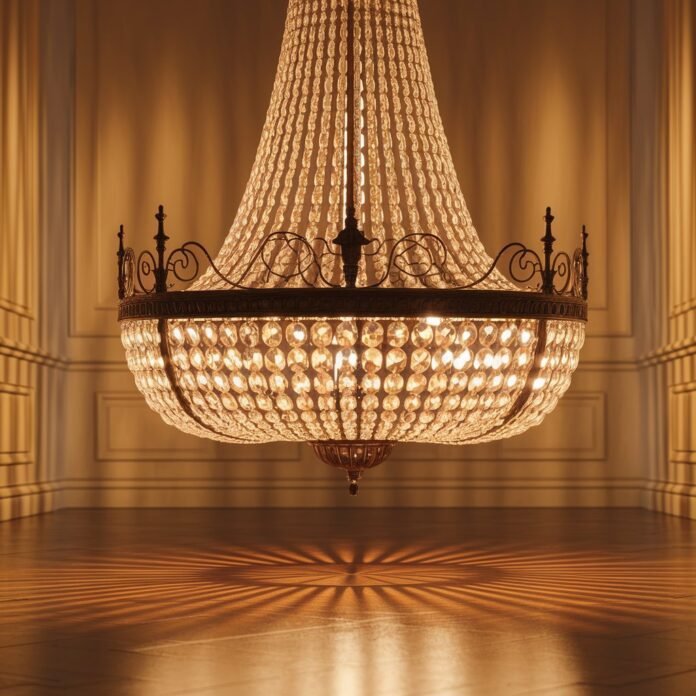Chandeliers have been age-old icons of wealth, opulence, and elegance. Medieval chandeliers were bare wooden crosses with spikes where candles were pushed in. Things eventually got better, especially in the 17th and 18th centuries when the use of crystal, glass, and beautiful metalwork became fashionable in European royal palaces.
By the Victorian and Georgian eras, chandeliers were de rigueur in great houses, ballrooms, and theatres throughout the UK. With their elegant detailing and dazzling collection of light, they provided an atmosphere of occasion and luxury to whichever room they illuminated. Today, while chandeliers still have the hint of old-fashionedness, they can comfortably integrate into contemporary interiors.
Styles and Materials: From Classic to Contemporary
Modern chandeliers vary widely in appearance, and one can easily find one that will fit nearly any room. Traditional versions have ornate crystal drops, candle arms, and antique brass or gold finishes. These are the traditional choice for period homes, hotels, and dining rooms, where they create a sense of old-fashioned elegance.
Modern chandeliers challenge form and material limits, however. Geometric forms, slender frames, and unconventional material like wood, acrylic, or mass-produced metal are employed by designers to test. One is in modern UK homes confronted with chandeliers in the most unlikely locations—kitchen, bathroom, or study— with a very powerful, innovative atmosphere.
Things are made very varied depending on taste. Crystal is still a timeless favorite, especially in upscale neighborhoods, but glass and metal are hip now in contemporary living rooms. There are even green chandeliers made today out of recycled materials, which is something that environmentally conscious homeowners like.

Selecting the Ideal Chandelier for Your Residence
If choosing a chandelier, take room style and dimensions into account. An extremely fussy crystal one will overwhelm a small room, and a basic one will become invisible in a huge, lofty room. There is a concern regarding ceiling heights—a house having an extremely lofty ceiling can be adorned with the bigger, multi-tiered kind of chandelier, but in cases of low ceilings, use a flush or semi-flush fitting.
Light output should also be taken into consideration. Though the older chandeliers were more of an eye piece, the new chandeliers are utilized for purposeful lighting. LED technology is prevalent to yield both aesthetic as well as energy-saving outputs. Most chandeliers are dimmable too, meaning that you can manipulate the mood according to the occasion.
For period rooms or heritage homes, a chandelier can bring elegance to the room and add emphasis to other elements such as fireplaces, coving, or ceiling roses. For an accent, however, a sophisticated modern chandelier can provide visual interest and contrast in an industrial or minimalist abode.

Nowadays, chandeliers are no longer the preserve of ultra-high-cost mansions or traditionally upholstered homes. Nowadays, they can be much more affordable for individuals, courtesy of enormous quantities of fashion-driven but budget-friendly options provided by high-street stores, internet retailers, and low-label UK designer companies.
Chandeliers are increasingly a symbol of a wide cultural shift towards personality in the home interior. Whether remodeling an old building from start to finish, fitting out a new build, or simply refurbishing their existing interiors, chandeliers offer the chance to indulge personality and create depth to the room’s overall aesthetic.
The British market has been keen to jump onto this bandwagon, and now the manufacturers produce to a scale of prices and tastes. Chandeliers can go from country farmhouse appearance all the way up to smooth Scandinavian style, so they are a standard in the professional interior designer’s kit bag as much as they are with enthusiastic do-it-yourself renovators.



